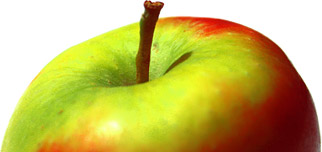My wife and I just purchased a house in the East End of Boise, not far from Castle Rock and the Old Penitentiary.
There are several apple trees in the back yard. One looks like it is very old and over grown. The branches are loaded with small red apples.
Some people have told me that the trees were originally planted as part of the orchard that supplied the Old Penitentiary. That would mean that the tree is around 100 years old.
My question is, how do I go about pruning the tree so that it can someday yeild quality fruit again? Should I leave it alone? Should I thin out the over growth and open up the center? Also, how do I determine the type?
Old Penitentiary Orchard Trees?
Moderator: appledude
I have a Stayman-Winesap tree that I keep around for school tours that will be 100 years old in 2010. It has been pruned each year as far as I know. It still bears fruit every year that are not beautiful but still taste great. The fruit will probably not be as eye appealing as what you see in the supermarket, but they will still be great for your use. Remember, beauty is only skin deep.
Keeping some of these old timers around is important for nostalgia if nothing else.
For a neglected tree such as yours, I would recommend a multi-year approach. This Fall begin by cleaning up around the tree to remove any competition. Wait until January to make any pruning cuts on the tree. You want the tree to be dormant to prevent winter injury especially since you'll probably need to make some large cuts. The first cuts should be to remove any dead or decayed wood, four or five major cuts to open up the tree and remove some weight from the limbs to prevent wind or storm damage. These old trees are usually pretty fragile in the center, so removing some limb weight is a good idea.
The second year remove the vigorous upright limbs (water-sprouts), and select four or five main scaffold limbs (growing at a right angle from the trunk) that you want to keep to form the tree. Remove the other large limbs.
Don't remove more than 25% of the total tree volume on any given year. Spread out the renovation as many years as necessary.
Each year make finer and finer cuts to thin out branches. Don't completely open up the tree center. Too much sunlight on the main scaffolds will cause sunburn and eventually kill the exposed limbs. Once you get to the fine pruning years, there are some good web sites that discuss pruning methods.
This is the one I use as a handout in my Farm Market.
http://hgic.clemson.edu/factsheets/hgic1351.htm
As far as variety identification...there are literally thousands of varieties in the books. If you can find a local orchardist to take some samples to, they may be able to help. You can also take some photo's and post them on this forum, someone may recognize your variety. Time of fruit ripening, flavor of fruit and pictures of calyx end (bottom of apple, opposite of stem) will help in identification.
Good luck and thank you for attempting to preserve a piece of horticultural and American history.
Take pictures to remember your journey. It will make a great story some day.
Keeping some of these old timers around is important for nostalgia if nothing else.
For a neglected tree such as yours, I would recommend a multi-year approach. This Fall begin by cleaning up around the tree to remove any competition. Wait until January to make any pruning cuts on the tree. You want the tree to be dormant to prevent winter injury especially since you'll probably need to make some large cuts. The first cuts should be to remove any dead or decayed wood, four or five major cuts to open up the tree and remove some weight from the limbs to prevent wind or storm damage. These old trees are usually pretty fragile in the center, so removing some limb weight is a good idea.
The second year remove the vigorous upright limbs (water-sprouts), and select four or five main scaffold limbs (growing at a right angle from the trunk) that you want to keep to form the tree. Remove the other large limbs.
Don't remove more than 25% of the total tree volume on any given year. Spread out the renovation as many years as necessary.
Each year make finer and finer cuts to thin out branches. Don't completely open up the tree center. Too much sunlight on the main scaffolds will cause sunburn and eventually kill the exposed limbs. Once you get to the fine pruning years, there are some good web sites that discuss pruning methods.
This is the one I use as a handout in my Farm Market.
http://hgic.clemson.edu/factsheets/hgic1351.htm
As far as variety identification...there are literally thousands of varieties in the books. If you can find a local orchardist to take some samples to, they may be able to help. You can also take some photo's and post them on this forum, someone may recognize your variety. Time of fruit ripening, flavor of fruit and pictures of calyx end (bottom of apple, opposite of stem) will help in identification.
Good luck and thank you for attempting to preserve a piece of horticultural and American history.
Take pictures to remember your journey. It will make a great story some day.
